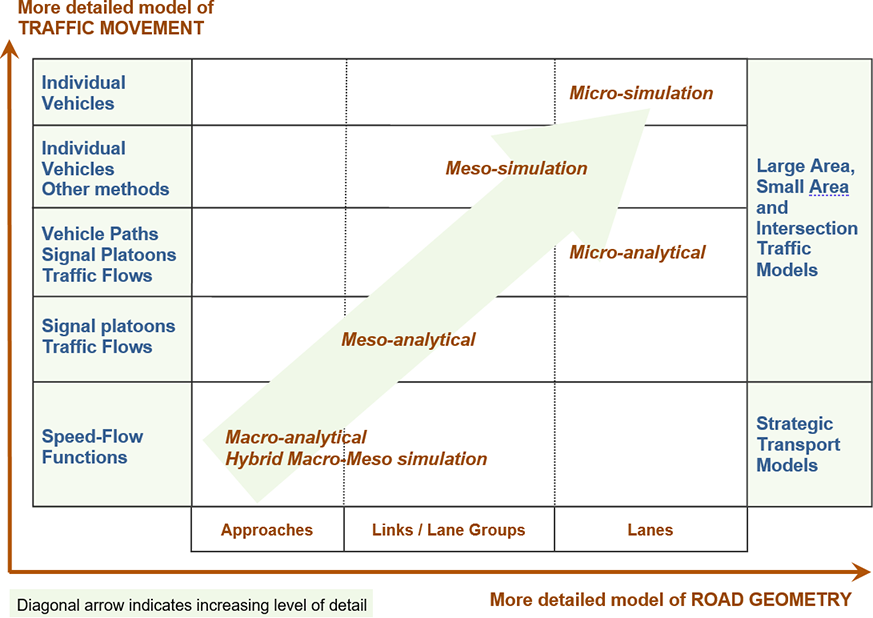A critical review of Austroads Report AP-R621-20
Revised version published as Austroads Report AP-R647-21 “Management of Traffic Modelling Processes and Applications”
What is wrong with Austroads model categorisation?
It is important to identify the most relevant defining characteristics of traffic and transport modelling software for the benefit of managers responsible for commissioning and managing modelling projects. The model categorisation and hierarchy system given in the Austroads report AP-R647-21 fails to relate to the geographic extent of the area to be modelled, and the level of detail required to represent the road and transport network within this area. It is inconsistent as it confuses Model Type, Model Level of Detail and Modelling Technique. It places software packages into boxes in this confused system, thus misleading the readers about the capabilities of software.
Proposed transport and traffic modelling categories
The proposed model categorisation system presented in the critical review report is based on the following framework for categorising traffic and transport models.
Model Type identified by the type of area and the network size as a rough guide:
- Strategic Transport Models: Very large networks (city scale, regional scale).
- Large Area Traffic Models: Medium to Large networks (up to 30-100 intersections).
- Intersection, Corridor and Small Area Traffic Models: Single intersections, corridors and small Networks (up to 10-20 intersections).
Model Level identified by the level of detail determined according to the scale of the model:
- Macroscopic: Large-scale model with more aggregate elements.
- Mesoscopic: Intermediate scale and level of detail between microscopic and macroscopic.
- Microscopic: Small scale model with detailed elements.
Modelling Technique contrasted as analytical or simulation:
- Simulation Model: Modelling of traffic moving in a network as individual vehicles or as groups (small packs, platoons) of vehicles.
- Analytical Model: This term refers to algorithmic models that combine mathematical model elements based on a combination of traffic theory and empirical derivations.
Recommended transport and traffic model categorisation
Model level of detail - traffic movements and road geometry
The Macroscopic / Mesoscopic / Microscopic categories of Model Level in the Austroads report AP-R647-21 appear to be based on traffic movements only according to the detail of representing the traffic stream. An important element to determine Model Level is the level of detail in modelling the road geometry (infrastructure on which traffic movements take place). This view accepts the importance of not only vehicle-to-vehicle (or movement-to-movement) interactions but also vehicle-road geometry interactions. The difference between lane-based, link-based and approach-based models can be understood only by due consideration to this aspect of model level of detail.
Traffic models according to the levels of detail of traffic movement and road geometry

Other modelling guidelines
The Main Roads Western Australia Operational Modelling Guidelines and the New Zealand Transport Agency Transport Model Development Guidelines categorise the models on the basis of geographic coverage and purpose of modelling rather than model detail (macroscopic, microscopic, mesoscopic) and modelling technique (simulation, analytical). As such, they are in line with the proposed categorisation structure.

